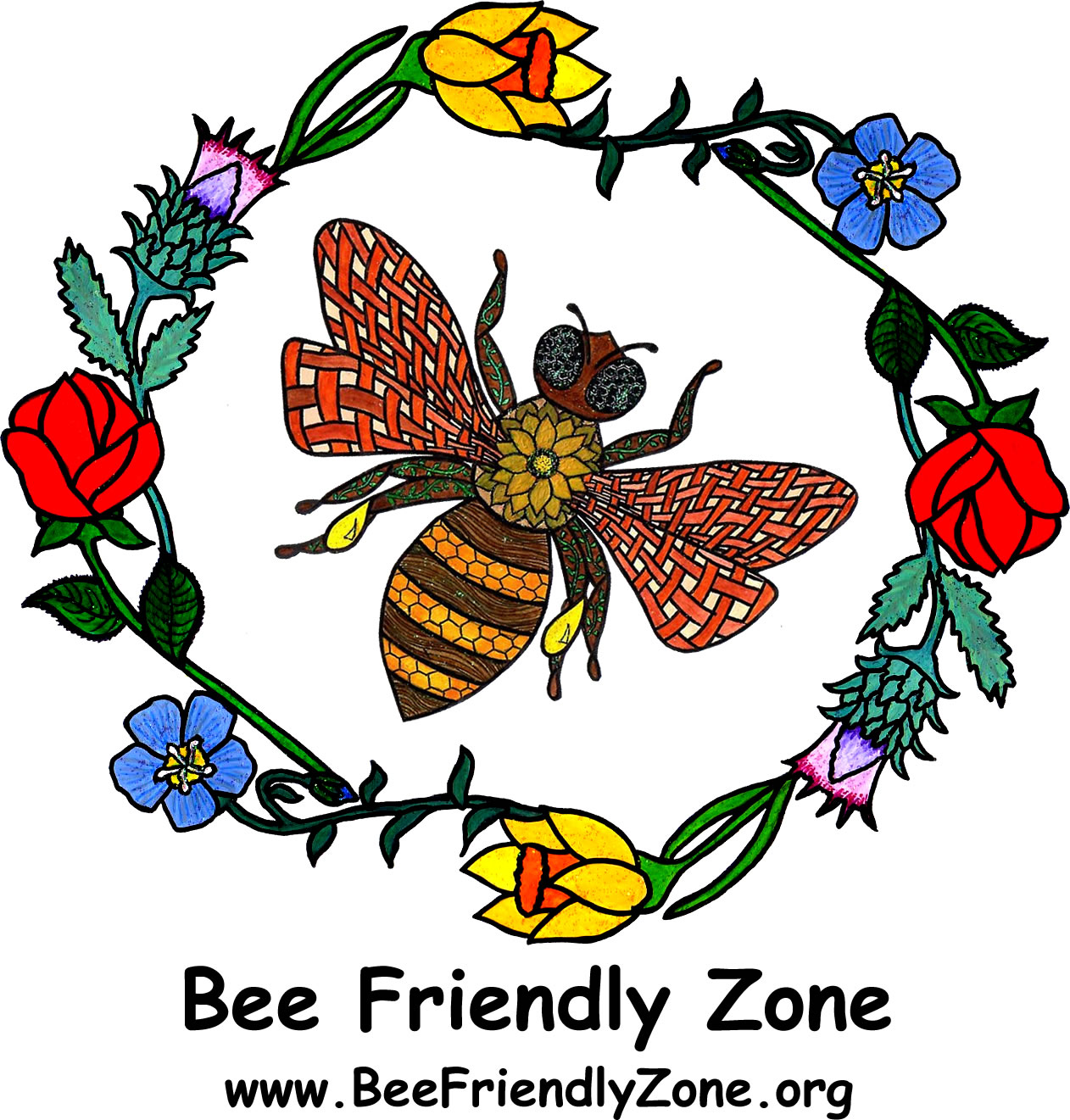a safer place for pollinators
|
What else can I do to help the bees?
Here are 10 things you can do:
1. Stop using insecticides - especially for 'cosmetic' gardening.
There are better ways of dealing with pests - especially biological controls. Modern pesticides are extremely powerful and many are long-lasting and very toxic to bees and other insects. Here is a good source of information about pesticide toxicity.
2. Avoid seeds coated with systemic insecticides.
Beware - some farm seeds are now coated with Clothianidin and similar systemic, neonicotinoids, which cause the entire plant to become toxic to bees and many other creatures that may feed on it. Similar coatings may soon appear on garden seeds. Check your seed packets carefully - and if in doubt, ask the manufacturer for full information.
3. Read the labels on garden compost - beware hidden killers!
Some garden and potting composts have been on sale that contain Imidacloprid - annother neonicotinoid insecticide that is deadly for bees. It is often disguised as 'vine weevil protection' or similar, but it is highly toxic to all insects and other soil life, including beneficial earthworms. The insecticide is taken up by plants, and if you use this compost in hanging baskets, bees seeking water from the moist compost may easily be killed.
4. Create natural habitat.
If you have space in your garden, let some of it go wild to create a safe haven for bees and other insects and small mammals. Gardens that are too tidy are not so wildlife-friendly.
5. Plant bee-friendly flowers.
You can buy wildflower seeds from many seed merchants, and they can be sown in any spare patch of ground - even on waste ground that is not being cultivated. Some 'guerilla gardeners' even plant them in public parks. Be sure you know what you are planting and that you have permission.
6. Provide a site for beehives.
If you have some space to spare, you could offer a corner of your garden to a local 'chemical-free' beekeeper as a place to keep a hive or two. They will need to have regular access, so bear this in mind when considering a site.
7. Make a wild bee house.
Providing a simple box as a place for wild bees to set up home is a step short of taking up beekeeping, but may appeal to those who want to have bees around but don't want to get involved with looking after them. Here are some ideas.
8. Support your local 'chemical-free' beekeepers.
Many people believe that local honey can help to reduce the effects of hayfever and similar allergies, which is one good reason to buy honey from a local beekeeper rather than from supermarkets, most of which source honey from thousands of miles away. If you can, find a beekeeper who does not use any chemicals in their hives and ask for pure comb honey for a real treat.
9. Learn about bees - and tell others.
Bees are fascinating creatures that relatively few people take the trouble to understand. There are lots of good books...
10. Become a beekeeper.
Not to be undertaken lightly, but it is easier than you might imagine to become a small-scale beekeeper - and you don't need any of the expensive equipment in the glossy catalogues! Everything you need to keep bees successfully can be made by anyone with a few simple tools. You could even start beekeeping for free!
You could also:
- Plant Bee-Friendly trees
- Turn a patch of wasteland into a BFZ by sowing wild flower seeds
- Make a bumblebee nest box
- Discover how to garden without using insecticides or weed-killers
- Leave undisturbed, wild areas in your garden
- Get together with friends and neighbours to make your BFZ bigger!
- Read 10 Things You Can Do to Help Save the Bees
